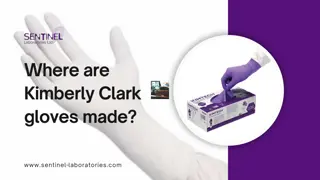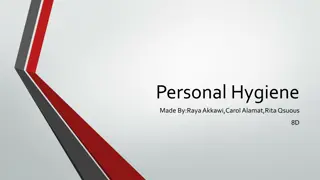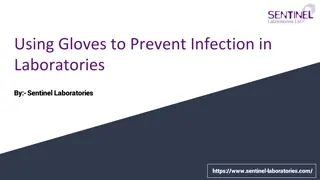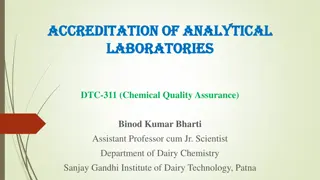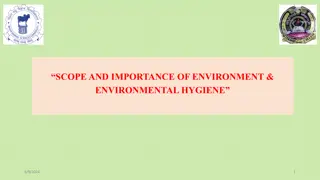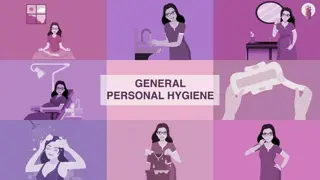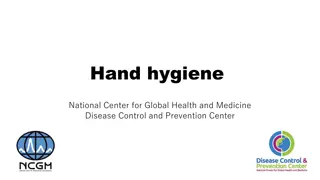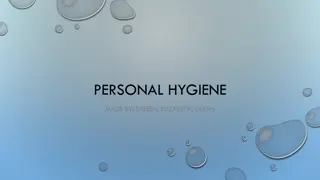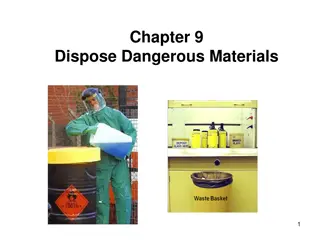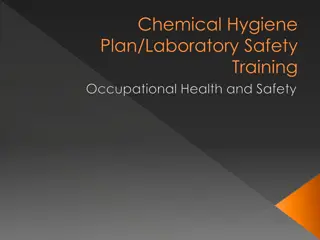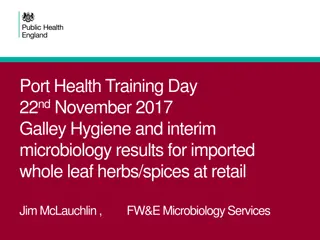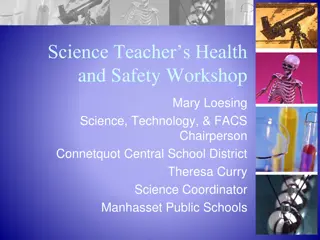Best Practices for Chemical Hygiene and Safety in Laboratories
Responsibilities of the Chemical Hygiene Officer (CHO) include implementing the Chemical Hygiene Plan (CHP), monitoring the chemical life cycle, arranging staff training, conducting safety inspections, assisting staff, and maintaining records. Principals and Science Department Heads support staff in CHP implementation, while teachers ensure safe experiment practices. Minimizing chemical exposures, ensuring proper ventilation, emergency equipment maintenance, and compliance with CHP requirements are essential for a safe laboratory environment.
Download Presentation

Please find below an Image/Link to download the presentation.
The content on the website is provided AS IS for your information and personal use only. It may not be sold, licensed, or shared on other websites without obtaining consent from the author.If you encounter any issues during the download, it is possible that the publisher has removed the file from their server.
You are allowed to download the files provided on this website for personal or commercial use, subject to the condition that they are used lawfully. All files are the property of their respective owners.
The content on the website is provided AS IS for your information and personal use only. It may not be sold, licensed, or shared on other websites without obtaining consent from the author.
E N D
Presentation Transcript
Names the Chemical Hygiene Officer (CHO) and their duties Develop and implement CHP Monitor all aspects of chemical life cycle Arrange for staff training Provide for safety inspections Assist staff Keep Records
Principals will support staff in CHP Science Department Head will ensure implementation of CHP Teachers Planning and conducting experiment consistent with generally accepted practices Developing and following good chemical and biological habits
Minimize chemical exposures Receive training Use of minimal quantities Developing special procedures for high hazard chemicals (e.g., formaldehyde) Avoiding underestimation of risk Adequate ventilation Exposure limits Enforcement
General ventilation, make-up air and passive migration of volatile chemicals Open windows and doors Laboratory hoods for prevention of exposure to hazardous fumes Draw should be 100 feet per minute Look for the mark on the sash for maximum air flow Inspect regularly to ensure proper function
Emergency eyewash and shower Keep in unobstructed, good working order Train students on usage Test and document monthly Fire extinguisher (note also fire blanket) Requires annual training Requires monthly inspection Keep unobstructed
Comply with CHP requirements Chemical purchasing, handling and storage Minimize quantities Protect bottles from breakage Lift and carry with care Store compatibly Store in proper container & proper location Environmental monitoring
Housekeeping Keep aisles clear Eyewash/showers unobstructed Maintain orderly work areas Maintain container labels Emergency equipment maintained Maintain housekeeping Conduct safety inspections Maintain lab ventilation hoods annually
Personal protective equipment Control loose clothing Proper shoes (non-skid, closed toe, low heel) Eye protection Gloves for skin hazards (note compatibility) Lab coats may be needed Signs and labels Post emergency phone numbers near phone Post safety/emergency equipment signs Flammable storage areas signed Food prohibited area posted
Spill and accident procedures Comprehensive school safety plan (Front office) Waste disposal Segregate waste by type and compatibility Proper containers for waste Flammable storage areas signed Food prohibited area posted Special procedures may be necessary for chemicals
Identify and understand the hazards Prepare chemicals before class begins (have neutralizing agents readily available) Report any student injury immediately Maintain labels on containers Unknown materials must be disposed of by professional hazardous waste company Chemical storage areas are to be off-limits to students Suction devices only are to be used for pipetting No explosive chemicals are allowed.
Flammables and ignition sources must be kept separate Locate utility shut-offs to be used in emergency Maintain instructional area in orderly condition Special precautions and student instruction for: Bunsen burners Heating liquids, test tubes, beakers, crucibles Handling chemicals Cutting, bending and fire-polishing glass Using pipettes and other lab equipment
Keep lab locked when not in use Notify custodial staff of hazards Teachers should set a good example and enforce requirements of CHP
Employee training provided upon initial assignment to lab New hazards will be communicated to employees Refresher training will be provided at least every three years Site specific refresher annually Training contents specified in written CHP Student/Parent Science Safety Agreement
Available, as needed, e.g., spill situation or employee concern Signs or symptoms of exposure First aid and emergency medical assistance provisions are in place
SDSs should be on-hand for all chemicals on-site and readily available.
Employee injury Student injury CHP-related (e.g., inspections) Medical record Exposure monitoring SDSs
Annual review by CHO and department head Document review and maintain records Date of review Names of reviewers List of changes Dates changes enacted/completed



